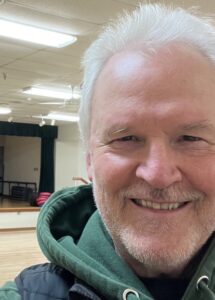“I Looked ‘Round Me For A Reason When There Wasn’t Nothing Else To Blame It On.”
-the Eagles
Has anyone explained to you the difference between What and Why. If they did, would you believe them?
I recommend a mentor, even if you don’t tell them about their mentorship. Be a good listener and you’ve got one, no matter what you call them.
Simon Sinek did a TED Talk called Start With Why.
Take a look and you’ll see him draw three circles in target style. The outside ring is WHAT, the middle is HOW, the bulls eye is WHY.
He goes on the explain who most people start with WHAT, as in what they do, what they’re selling, and what you can do about it.
If you get hooked by WHAT, then you’re like everyone else. Shiny and sparkles always gets a, “What is that?”
It’s a new car, a new watch, a new something that does what the old one does, only better.
HOW can that be? Ask that question and get ready for the list. Bigger. Better. More economic. More green. More sustainable.
WHAT and HOW lay it out there cut and dried. And that’s all anyone asks for. Right?
The last word, the bulls eye, is WHY and it’s not so cut and dried. It’s not laying out there.
Why buy one thing instead of another? Why use one service instead of another. You can’t add up all of your choices and get ‘sales pitch’ as a good answer.
In general you know what you want in material things, but narrowing down the search to why moves from concrete to mush. Your feelings enter into it. Maybe these are feelings you’re not used to?
If you’re in the market for an electric car the choices are limited, but one seems to stand above the rest. Do you want an electric car, or do you want a Tesla?
With one you’re buying from the big boys, the same companies that make regular powered cars; a Tesla comes from a company dedicated to electric cars.
Every product on the market comes with a choice. Whether it’s a need or a want, stuff comes with baggage. When you can answer the question of WHY you chose one thing instead of another, you open your mind to a better process.
If you take the first thing you see that fits a need, your brain shrinks just a little.
Baby Boomer brains come with an easy open advantage. We’ve heard how minds and umbrellas work best when they’re open; we’ve encountered open-mindedness at every turn. New music, new fashion, new trends. For the most part the boomer generation has made an effort.
For early boomers an open mind required loading up on LSD before discussing why an open mind is a good thing. The other side is more than a few opened up too far and things dropped out.
Aging boomers find themselves surrounded by collections. Dishes, pots and pans, silverware, tools, clothes. Most of us take stuff in stride as stuff we need without asking ourselves why we need it.
If you need something, why not make it more significant. For example, you need a new table because the one you have is de-laminating, scratched, and the legs are loose. You can fix the old table, find a new one at an antique store, or buy a jungle hardwood table from Costco created by companies engaged in deforestation.
Why would you want a handmade table from wood you personally chose? Because life is full of too much cheap crap destined for the landfill and you believe in family heirlooms.
Your fireplace needs a mantle. Either hire a fireplace company to come in, or throw a board up on brackets and screw it down.
Or, why not cruise lumber mill yards and find that one log that speaks to you. Get it cut and dried and take it home to sand. Then add twenty coats of finish and install this work of art.
Sure, it’s only a mantle, but it’s not mass produced. In fact it’s the only one of it’s kind in existence. There’s no mold or form used to create your mantle. It’s custom all the way, and not custom like every other custom thing. One of kind means only one.
Creating moments and memories are good for all, but especially good for aging boomer brains. We grew up with Japanese-made transistor radios; now we have Chinese-made audio devices. Once we only drove American steel down the road because Japanese cars were still evolving from econo-boxes. No one calls a Lexus an econo-box.
Ask yourself why you engage in the things around you, the lives that touch yours. A creative person accepts this sort of self-talk as guidance to a better understanding; a non-creative person might be frightened of self-talk. It’s the echo that does it.
Quality of life is based on the importance you attach to your choices. Even when you think you don ‘t have one, you do.
Make it a good one.



